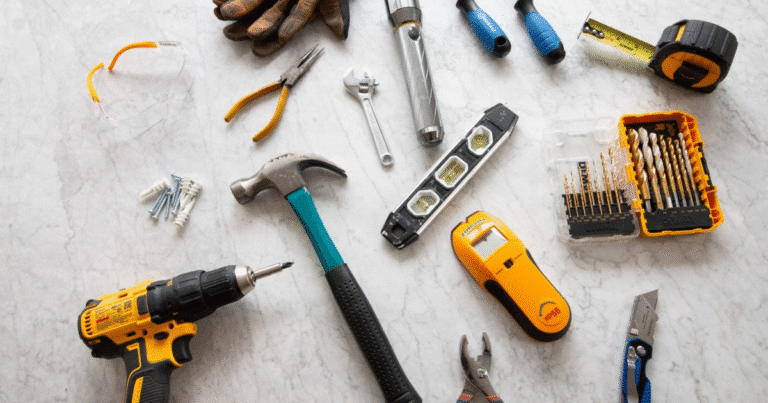Did you know that using the wrong outdoor tools can double your yard work time and damage your garden? From lawn mowers and string trimmers to pressure washers and cultivators, having the right equipment is crucial for efficient, professional-quality yard maintenance.
Some of the most commonly used outdoor tools include rope saws for cutting high branches, leaf blowers for clearing debris, loppers for pruning, pressure washers for deep cleaning, and cultivators for soil preparation. Each tool has a specific role in keeping outdoor spaces neat and healthy.
At Kutir Tools, we offer innovative and high-quality tools for powerful, precise outdoor work. You can experience unmatched performance and craftsmanship in every task.
Top 15 Must-Have Outdoor Tools for Homeowners
Explore our effective list of the top 15 tools every homeowner needs for outdoor use. These tools make yard work easier, faster, and more precise for a cleaner, healthier outdoor space.
Category 1: Power Tools & Equipment
1. Lawn Mower
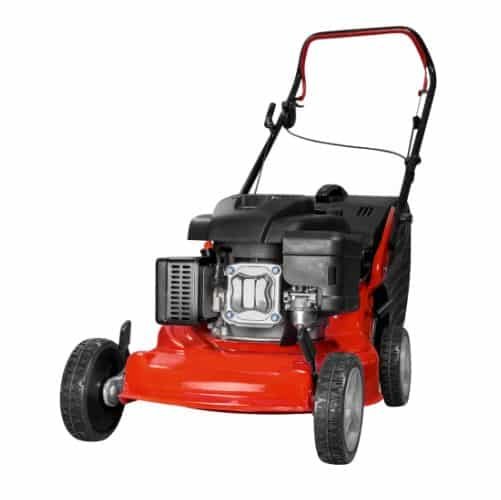
A lawn mower is key to keeping your lawn looking its best. Whether you’re using a push mower for a small yard or a zero-turn model for a larger space, the right mower makes a big difference. With features like powerful engines, adjustable heights, and durable decks, you’ll get a clean, even cut every time.
Choosing between gas-powered and battery-powered models depends on your needs: gas for larger yards or battery for quieter, eco-friendly options. Whatever you choose, the right mower will make lawn care easier and more efficient.
What It’s Used For:
- Regular lawn trimming and mowing
- Maintaining an even grass height for aesthetic appeal
- Creating a professional finish in larger lawns
- Mulching grass clippings for fertilization
Why It’s Essential:
A lawn mower is vital for maintaining a beautiful and well-kept lawn. It allows you to achieve a clean, consistent cut, promoting healthy grass growth and enhancing your home’s curb appeal. With the right model, mowing becomes effortless and quick, improving the overall look of your yard.
Quick Buying Advice:
Choose your mower based on your lawn size. For small yards, go with a simple push mower. Medium lawns suit self-propelled mowers for easy movement and neat cuts. For large areas, zero-turn mowers cover ground fast with high precision.
Estimated Cost:
$150 to $1,500, depending on size, features, and power source.
Special Maintenance and Storage Tips:
- Clean the mower deck after each use to remove grass buildup
- Sharpen the blades regularly to ensure smooth cuts
- Change the oil and filter periodically for gas mowers
- Store in a dry, sheltered space during the winter months
2. String Trimmer (Weed Whacker)
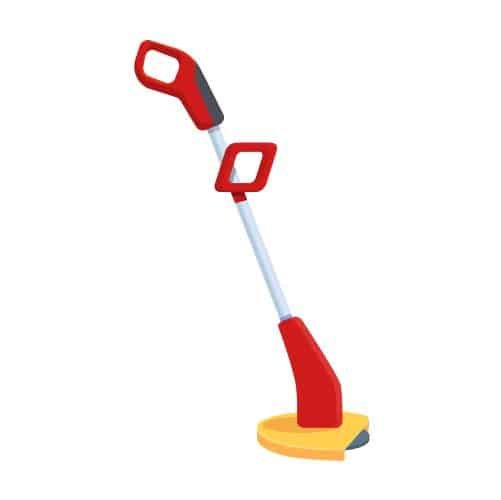
A string trimmer is a powerful lawn care tool. You use it where mowers can’t reach. It features a fast-spinning nylon line that cuts grass and weeds cleanly. You can edge driveways, fences, and flower beds with precision.
Choose gas models for large yards and tough overgrowth. Select electric or battery models for small to medium lawns. This tool keeps your yard neat, sharp, and professionally maintained.
What It’s Used For:
- Edging along sidewalks, driveways, and garden beds
- Cutting grass and weeds around trees and obstacles
- Creating a clean, neat finish on lawns
- Trimming tall weeds in hard-to-reach corners
Why It’s Essential:
A string trimmer allows you to tackle areas that a mower can’t reach, such as corners and edges. It creates clean boundaries and removes overgrown patches, giving your lawn a well-maintained, polished look. It’s an essential tool for homeowners who want a neat yard with minimal effort.
Quick Buying Advice:
Choose a string trimmer with adjustable handles for comfort. Gas models are ideal for large yards, while electric models are quieter and work well for smaller spaces.
Estimated Cost:
$40 to $300, depending on power source and brand.
Special Maintenance and Storage Tips:
- Replace the trimmer line when it’s worn out to ensure efficiency
- Clean the head after each use to avoid debris buildup
- Check the string spool for wear and replace as needed.
- Store in a dry location to prevent rust on the metal parts
3. Hedge Trimmer
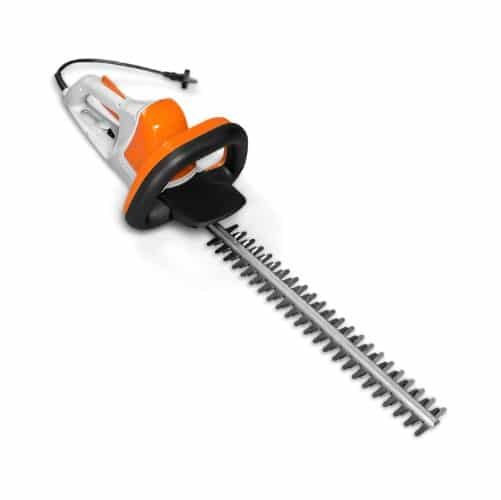
A hedge trimmer is a tool designed for trimming and shaping bushes, shrubs, and hedges. It features long, sharp blades that cut through dense growth, allowing you to create clean, neat edges and maintain the appearance of your garden. Available in both gas and electric models, hedge trimmers are versatile enough for residential use or professional landscaping.
What It’s Used For:
- Shaping and trimming hedges and bushes
- Cutting back overgrown shrubs
- Maintaining clean lines and edges in garden beds
- Pruning light to medium-sized branches
Why It’s Essential:
A hedge trimmer keeps your yard looking sharp. You use it to shape hedges with clean cuts. It trims fast, saving you time on yard work. Your garden looks neat and well-kept every day. Choose a model that suits your hedge size and thickness. This tool gives your landscape a professional and polished finish.
Quick Buying Advice:
If you have small to medium-sized hedges, choose a lightweight, cordless trimmer for ease of use. Gas models are better suited for larger, dense shrubs.
Estimated Cost:
$40 to $300, depending on type and features.
Special Maintenance and Storage Tips:
- Clean the blades after each use to remove sap and debris
- Sharpen the blades regularly to maintain cutting efficiency
- Lubricate the blades to prevent rust
- Store in a cool, dry place to protect from weather damage
4. Leaf Blower
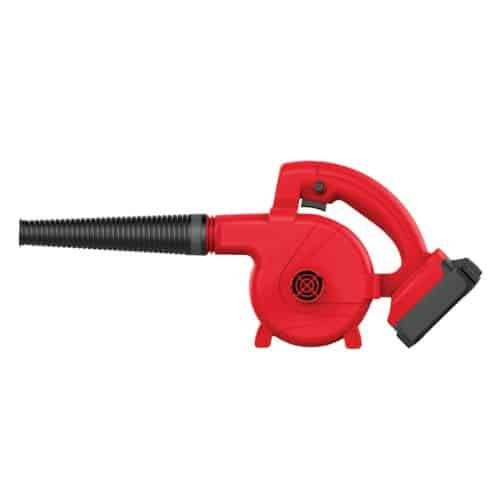
A leaf blower is designed for quickly clearing leaves, debris, and grass clippings from your yard. Available in handheld, backpack, or wheeled models, leaf blowers make cleanup easier and faster.
They are also versatile tools for cleaning patios, driveways, and even gutters. Electric and gas-powered options are available for different yard sizes and needs.
What It’s Used For:
- Blowing leaves off lawns, driveways, and sidewalks
- Clearing debris from patios and decks
- Removing light snow in winter
- Cleaning gutters and garage floors
Why It’s Essential:
A leaf blower is indispensable for keeping your yard clean without the back-breaking effort of raking. It’s fast, efficient, and versatile, helping you easily clear leaves, grass clippings, and debris from various outdoor spaces.
Quick Buying Advice:
If you have a large yard, choose a backpack blower, as it offers greater comfort and power. For smaller spaces, a handheld electric model will be more convenient and quieter.
Estimated Cost:
$50 to $400, depending on power type and model.
Special Maintenance and Storage Tips:
- Clean the air filter regularly to maintain performance
- Inspect the nozzle for clogs and clear debris when needed
- Keep the blower nozzle and motor clean to prevent overheating
- Store in a dry location to protect from weather damage
5. Pressure Washer
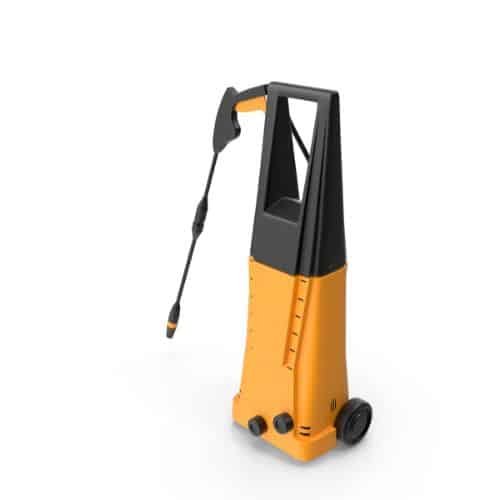
A pressure washer is an essential tool for tackling heavy-duty outdoor cleaning tasks. It uses high-pressure water to break down dirt, grime, and stains on surfaces like concrete, siding, and vehicles.
Available in gas and electric models, pressure washers have adjustable pressure settings and various attachments to suit different jobs. Whether cleaning driveways, decks, or patios, a pressure washer makes the process faster and more effective.
What It’s Used For:
- Cleaning tough stains on concrete, driveways, and sidewalks
- Washing patios, decks, and garden furniture
- Removing dirt, algae, and mildew from house exteriors
- Cleaning vehicles, boats, and other outdoor equipment
- Spraying off garden tools and machinery after use
Why It’s Essential:
A pressure washer is essential for maintaining the appearance and cleanliness of your outdoor spaces. It offers high efficiency, saving you time on traditional cleaning methods. With adjustable pressure, it tackles both heavy-duty jobs and delicate surfaces, ensuring effective cleaning without damage.
Quick Buying Advice:
When selecting a pressure washer, consider the PSI (pounds per square inch) and GPM (gallons per minute) for your needs. For light-duty tasks, choose an electric model with adjustable pressure. For tougher, large-scale cleaning, a gas-powered model with high PSI is ideal.
Estimated Cost:
$100 to $500, based on PSI, GPM, and features.
Special Maintenance and Storage Tips:
- Flush the nozzle and water inlet after each use to clear debris
- Regularly inspect hoses and fittings for cracks or leaks
- Clean the filter to prevent blockages
- Store the washer in a dry, protected area to avoid damage from weather
6. Cultivator or Tiller
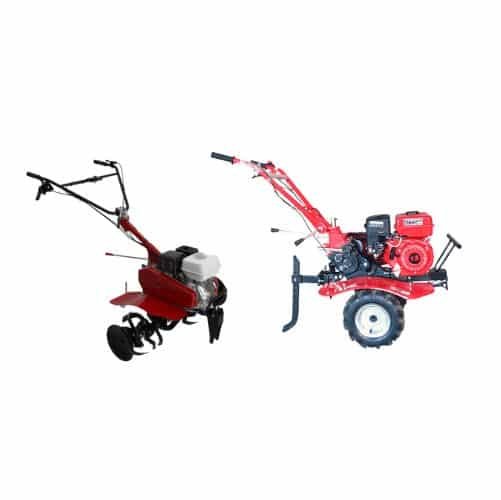
A cultivator and a tiller are essential gardening tools for preparing and maintaining healthy soil, though they serve distinct functions. A tiller is designed to break up hard, compacted soil deeply, making it ideal for creating new garden beds or revitalizing neglected areas.
In contrast, a cultivator is smaller and lighter, perfect for loosening surface soil, controlling weeds, and mixing in fertilizers or compost in established garden beds.
What It’s Used For:
- Keeps soil loose, promoting root growth and nutrient absorption
- Helps control weeds with minimal disruption to established plants
- Makes it easy to refresh garden beds between plantings
- Essential for starting new gardens or revitalizing neglected areas
- Saves time and labor compared to manual digging
- Ensures even soil texture for healthy plant development
Why It’s Essential:
A cultivator or tiller is crucial for improving soil quality and reducing manual labor. By loosening soil, it facilitates better aeration and nutrient distribution, leading to healthier plants. It’s particularly helpful in dense, compacted soils, making gardening and planting much easier and more efficient.
Quick Buying Advice:
Choose a tiller based on the size of your garden. A small, lightweight cultivator works well for flower beds, while larger, more powerful tillers are necessary for extensive vegetable gardens or hard-packed soil.
Estimated Cost:
$150 to $600, depending on engine power, size, and brand.
Special Maintenance and Storage Tips:
- Clean the tines and blades after use to remove soil and debris
- Lubricate moving parts to ensure smooth operation
- Check for signs of wear and replace tines as needed
- Store the tiller in a dry place to prevent rust and prolong its lifespan
Category 2: Cutting & Pruning Tools
7. Hand Rope Chainsaw
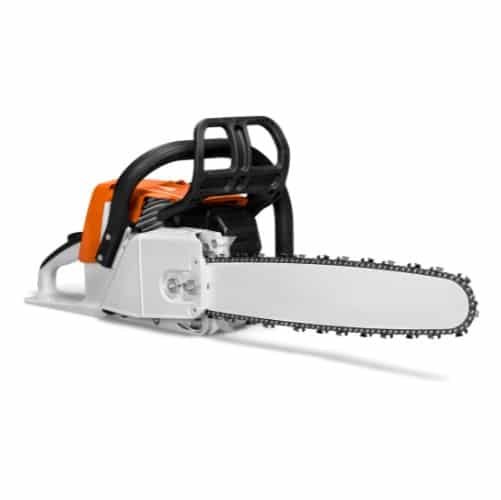
The hand rope chainsaw is a specialized tool designed for arborists and homeowners to trim high tree limbs safely without climbing. It features a high-strength chain that glides over branches, powered by a strong rope that allows precise control from the ground.
This lightweight, durable tool offers a safer alternative to traditional chainsaws, making it ideal for pruning hard-to-reach branches. Its portable nature makes it easy to store and handle, even in challenging environments.
What It’s Used For:
- Cutting high branches without needing a ladder
- Pruning thick, overgrown tree limbs
- Removing storm-damaged branches
- Accessing hard-to-reach branches in dense tree canopies
- Setting up rigging lines for professional tree removal or care
Why It’s Essential:
This hand rope chainsaw eliminates the need for climbing, reducing risks associated with high-altitude work. Its design allows precise cuts, making tree trimming and pruning easier and safer. It’s a valuable tool for maintaining trees without relying on bulky, heavy machinery.
Quick Buying Advice:
Choose a high-quality 48-inch hand rope chainsaw model for improved reach and cutting flexibility. Choose one with a corrosion-resistant chain for durability and a high-quality rope that offers maximum strength while remaining lightweight for easy handling.
Estimated Cost:
$30 to $60, depending on brand and features.
Special Maintenance and Storage Tips:
- After use, wipe down the chain to remove sap, dirt, and moisture
- Regularly lubricate the chain to ensure smooth operation and extend its life
- Store in a dry area to prevent rope fraying and chain corrosion
- Inspect the rope for signs of wear before each use to avoid sudden breakage
- Keep the hook aligned to ensure accurate, efficient cutting
8. Throw Weight and Line Kit
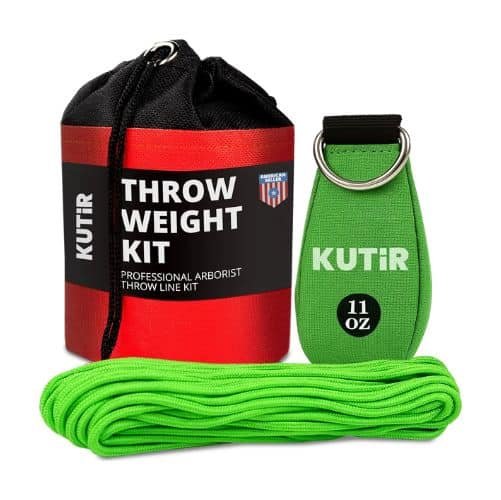
The throw weight and line kit is a professional tool used for setting up rigging lines over high branches. Designed for arborists and tree care professionals, it features a weight that can be thrown over branches, allowing the line to be positioned without climbing. This tool simplifies tree care and maintenance, providing a safe and efficient way to set up ropes for pruning or removal tasks.
What It’s Used For:
- Throwing a line over high tree branches for pruning
- Setting up rigging lines for tree removal
- Establishing a line for aerial work in tree care
- Positioning ropes for tree climbing or securing branches
- Ensuring precise placement of rigging lines for safety
Why It’s Essential:
The throw weight and line kit are essential for safe and efficient high-limb tree work. By eliminating the need for climbing, they reduce risk and streamline the process of setting up lines. This tool allows arborists and homeowners to handle tree maintenance safely, saving both time and effort.
Quick Buying Advice:
Look for a kit with a durable, easy-to-throw weight and strong, weather-resistant line. The weight should be compact yet heavy enough for reliable line placement over tall trees. A storage bag for the kit is also a helpful addition.
Estimated Cost:
$20 to $50, depending on weight, line length, and features.
Special Maintenance and Storage Tips:
- Clean the weight and line after each use to remove dirt and sap
- Store the kit in a dry place to prevent mold or fraying
- Inspect the line for wear or fraying before each use
- Coil the line neatly to prevent tangling
9. Loppers
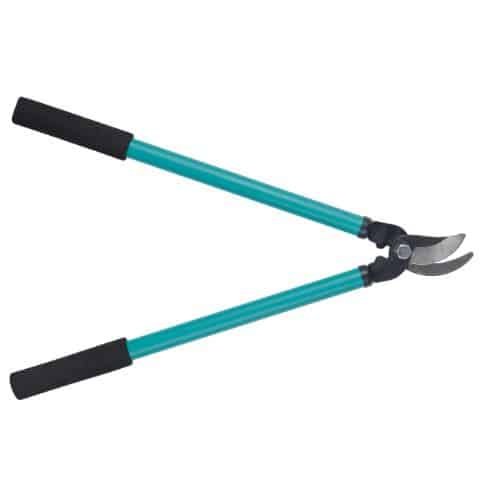
Loppers are robust hand tools designed for pruning branches that are too thick for pruning shears but not large enough for a chainsaw. Equipped with long handles and sharp blades, loppers offer greater leverage, making them ideal for cutting branches up to 2 inches thick.
With ergonomic designs and durable construction, loppers are reliable for gardeners, landscapers, and arborists who need to manage tree and shrub growth efficiently.
What It’s Used For:
- Pruning small to medium branches in trees and shrubs
- Cutting back overgrown bushes and hedges
- Shaping trees and maintaining their size
- Removing dead or damaged branches to promote healthy growth
- Maintaining a clean, neat garden or landscape
Why It’s Essential:
Loppers are essential for maintaining trees and shrubs. They allow you to easily cut thicker branches with precision. They provide better leverage and control than standard pruning shears, making them more effective for larger trimming tasks. Their ability to handle tough, woody growth ensures your plants remain healthy and well-shaped.
Quick Buying Advice:
Look for loppers with telescoping handles that can be adjusted for your comfort and the type of branches you’re cutting. Choose models with sharp, durable blades made from high-carbon steel or titanium for long-lasting sharpness and strength.
Estimated Cost:
$20 to $70, depending on size, material, and brand.
Special Maintenance and Storage Tips:
- Clean the blades after each use to remove sap and dirt
- Sharpen the blades regularly to maintain cutting efficiency
- Store in a dry area to prevent rusting
- Check handles for cracks and ensure the spring mechanism works smoothly
Category 3: Essential Hand Tools & Safety Gear
10. Garden Hose with Nozzle & Sprinkler
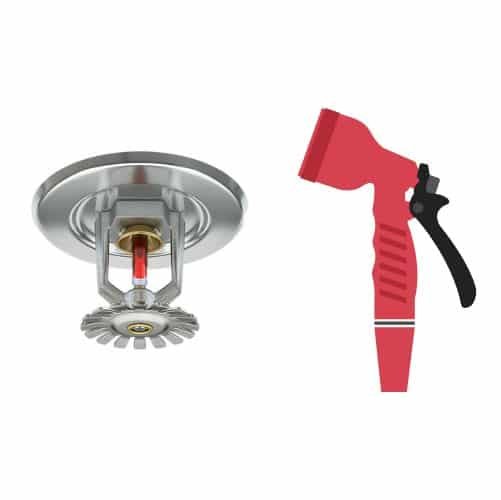
A garden hose with a nozzle and sprinkler is an essential tool for maintaining a healthy garden and lawn. The hose allows you to easily water plants, while the nozzle lets you control water flow and offers different spray patterns for various tasks.
The sprinkler attachment ensures even watering for lawns, flower beds, and gardens, making it a versatile solution for outdoor irrigation needs.
What It’s Used For:
- Watering lawns and garden beds
- Spraying flowers, shrubs, and trees
- Cleaning outdoor surfaces like patios and sidewalks
- Filling up pools or watering large areas with sprinklers
- Providing efficient and consistent irrigation for garden care
Why It’s Essential:
A garden hose is a must for every gardener. You use it to water plants easily and quickly. Adjustable nozzles give you full control over water flow, and sprinklers spread water evenly across your garden beds.
This keeps your plants healthy and growing strong. You can water flowers, vegetables, and lawn areas without hassle. Choose a hose length that suits your yard size. This tool makes daily garden care simple and efficient.
Quick Buying Advice:
Choose a durable, kink-resistant hose long enough for your yard. Look for a nozzle with multiple spray settings for flexibility and a sprinkler with an adjustable radius to cover larger areas.
Estimated Cost:
$15 to $50, depending on length, material, and features.
Special Maintenance and Storage Tips:
- Drain the hose after each use to prevent water damage
- Coil the hose neatly to avoid kinks
- Clean the nozzle regularly to maintain water flow
- Store the hose in a cool, dry place to extend its lifespan
11. Rakes (Leaf Rake & Garden Rake)
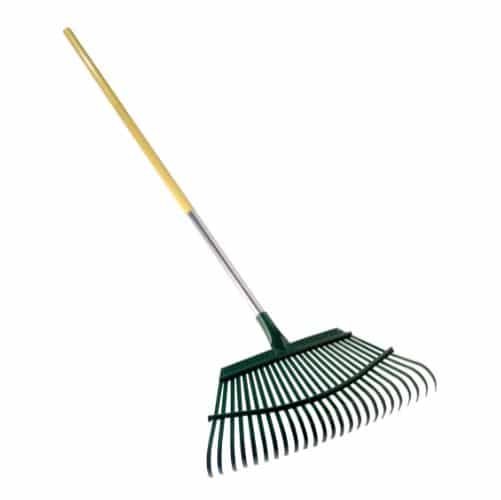
Rakes are versatile tools for gathering leaves, soil, and debris from your yard. The leaf rake features wide, flexible tines ideal for collecting leaves without damaging the lawn. The garden rake, on the other hand, is designed with stronger, more rigid tines for soil leveling, spreading mulch, and breaking up clumps. Both are essential tools for maintaining a clean, tidy yard.
What It’s Used For:
- Gathering leaves and garden debris
- Leveling soil and spreading mulch
- Breaking up soil clumps for better aeration
- Preparing garden beds for planting
- Cleaning up after mowing and trimming
Why It’s Essential:
Rakes are essential for keeping your yard free from leaves and debris. The garden rake helps you prepare soil, spread mulch, and keep your lawn healthy, while the leaf rake ensures your yard remains clean during the fall. Both tools save time and effort in yard maintenance.
Quick Buying Advice:
Choose a leaf rake with lightweight, flexible tines for ease of use. For garden work, opt for a garden rake with sturdy, durable tines to handle more challenging tasks like breaking up soil or leveling ground.
Estimated Cost:
$10 to $30, depending on material, type, and size.
Special Maintenance and Storage Tips:
- Clean the tines after each use to remove dirt and debris
- Store rakes off the ground to prevent rusting
- Check for broken tines and replace if necessary
- Keep the handle smooth by sanding any rough edges
12. Shovels (Digging & Transfer Types)
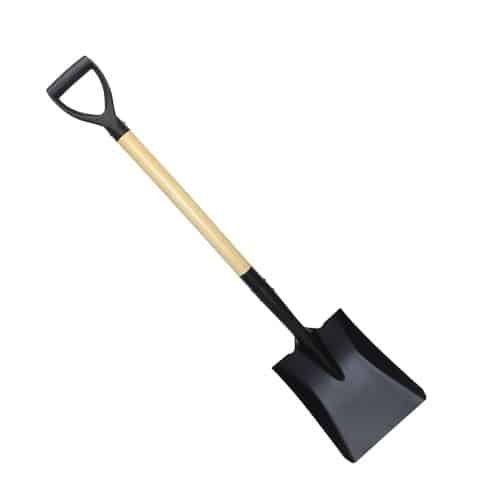
Shovels are essential for various tasks in your garden and yard, from digging holes for planting to moving soil and mulch. Digging shovels are designed with pointed tips to break through compact soil, while transfer shovels feature a wider scoop for moving materials. Both types are critical for planting, landscaping, and general outdoor work.
What It’s Used For:
- Digging holes for plants, trees, and shrubs
- Moving soil, mulch, or gravel
- Breaking up hard, compacted soil
- Edging garden beds with flat shovels
- Transferring soil or compost to garden beds
Why It’s Essential:
Shovels are fundamental for any gardening or landscaping project. They allow you to dig, transfer, and shape soil with ease. Without them, basic yard tasks like planting or leveling soil would be time-consuming and difficult.
Quick Buying Advice:
Choose a digging shovel with a strong, pointed blade for breaking tough soil. Transfer shovels with a wider, rounded blade are best for moving materials like mulch and dirt.
Estimated Cost:
$10 to $40, depending on material, handle type, and size.
Special Maintenance and Storage Tips:
- Clean the soil off the blade after use
- Store in a dry place to prevent rusting
- Keep the blade sharp for better digging performance
- Check for handle cracks and replace if damaged
13. Wheelbarrow
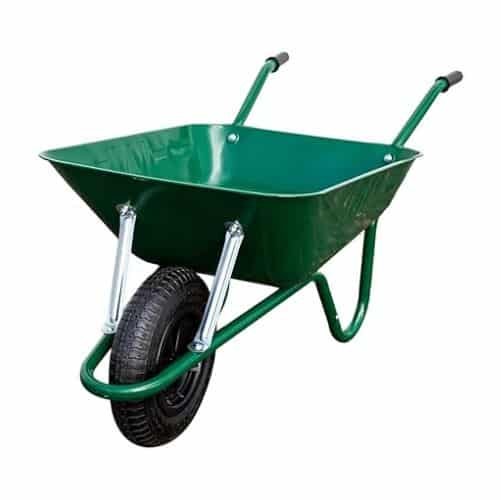
A wheelbarrow is a multi-purpose tool that makes transporting heavy loads of soil, mulch, and plants much easier. Designed with a single or double wheel, the wheelbarrow is a staple for gardeners and landscapers. With a large container and sturdy handles, it allows you to move large quantities of material quickly and with less strain on your body.
What It’s Used For:
- Moving soil, compost, mulch, and rocks
- Hauling plants or large garden materials
- Mixing concrete or soil for large projects
- Transporting garden debris for disposal
- Carrying large loads across uneven ground
Why It’s Essential:
A wheelbarrow is indispensable for large outdoor projects. It helps you move heavy materials, reducing physical strain and increasing efficiency. Whether you’re working in the garden, on landscaping, or in construction, a wheelbarrow is a must-have tool for handling bulky loads.
Quick Buying Advice:
Look for a wheelbarrow with a durable, rust-resistant steel body and a comfortable, ergonomic handle. Consider the wheel size based on your terrain type. But larger wheels are better for rough ground.
Estimated Cost:
$50 to $200, depending on size and material.
Special Maintenance and Storage Tips:
- Clean the container after each use to remove dirt and debris
- Check tire pressure regularly to ensure easy movement
- Store in a sheltered location to prevent weather damage
- Inspect handles for any splinters or cracks
14. Protective Work Gear (Gloves, Eye, Ear Protection)
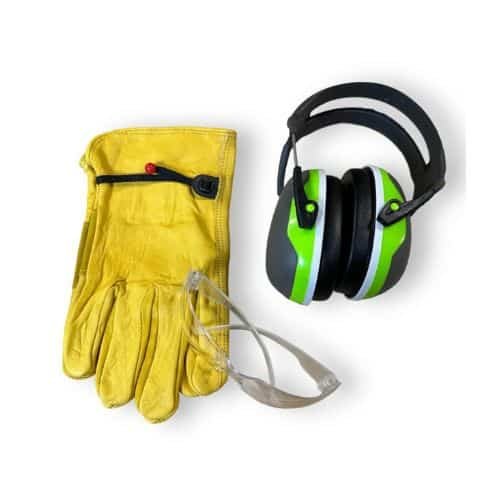
Protective work gear is essential for safeguarding yourself while working with heavy tools, sharp objects, and loud machinery. Quality gloves, eye protection, and ear protection provide safety during high-risk outdoor tasks such as trimming, pruning, and operating power tools. This gear is designed to keep you safe from injury and improve comfort during work.
What It’s Used For:
- Protecting hands from cuts, abrasions, and chemicals with gloves
- Shielding eyes from flying debris or sawdust with goggles
- Reducing noise damage to the ears from loud tools with ear protection
- Ensuring comfort and preventing fatigue during long outdoor projects
- Safeguarding from sharp tools and high-impact activities
Why It’s Essential:
Protective work gear is crucial for preventing injuries and ensuring safety while working with tools in the yard. By using gloves, goggles, and ear protection, you reduce the risk of cuts, debris injuries, and long-term hearing damage, making your outdoor tasks safer and more comfortable.
Quick Buying Advice:
Look for gloves with reinforced palms for durability. Choose goggles with anti-fog lenses for better visibility, and choose for noise-reducing earmuffs for high-decibel tasks.
Estimated Cost:
$10 to $60, depending on type and quality.
Special Maintenance and Storage Tips:
- Wash gloves after each use to remove dirt and chemicals
- Clean goggles with a soft cloth to avoid scratching the lenses
- Store ear protection in a case to prevent wear and tear
- Check for wear and tear regularly and replace damaged gear
15. Snow Blower
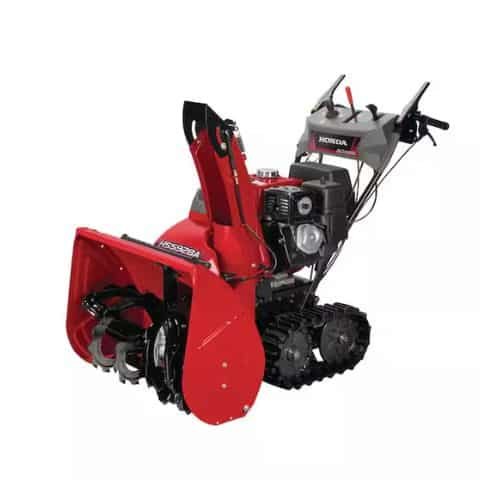
A snow blower is an essential tool for clearing snow from driveways, sidewalks, and other outdoor surfaces during the winter. It is available in single-stage, two-stage, and three-stage models and varies in size and power.
Designed to remove snow efficiently, they make clearing large areas easier and faster, especially in heavy snowfall. They save time and energy, allowing homeowners to maintain a clear path without the back-breaking effort of shoveling.
What It’s Used For:
- Clearing snow from driveways and walkways
- Removing snow from patios and decks
- Clearing pathways in high snowfall areas
- Reducing the strain of snow shoveling
- Removing snow from large yards or commercial areas
Why It’s Essential:
A snow blower is essential for maintaining safety and accessibility during the winter. It eliminates the physical strain of shoveling and ensures quick snow removal, preventing ice buildup and keeping your paths clear. For those in snowy climates, a snow blower is a time-saving, effective tool for winter maintenance.
Quick Buying Advice:
Choose a two-stage or three-stage model for larger, deeper snowfalls. For light snow or smaller areas, a single-stage model is sufficient. Consider electric models for quieter operation or gas-powered for greater power and range.
Estimated Cost:
$200 to $1,500, depending on type, power, and features.
Special Maintenance and Storage Tips:
- Clear the chute of ice and snow after each use
- Check the oil and fuel levels before each season
- Store in a dry place to prevent rusting
- Inspect augers and belts for wear and replace as needed
In Closing
Choosing the right outdoor tools transforms yard work from a chore into an enjoyable and efficient task. Investing in quality equipment like lawn mowers, string trimmers, and pressure washers ensures your garden stays healthy and visually appealing year-round. Proper tools not only save time but also enhance the longevity of your outdoor spaces.
At Kutir Tools, we offer a wide range of reliable, easy-to-use products designed to meet every homeowner’s needs. Ready to upgrade your yard care routine? Explore Kutir Tools today and experience the difference professional-grade outdoor equipment can make!
Frequently Asked Questions
Q1. How often should I maintain my outdoor tools?
Answer: You should clean and check your tools after every use. Sharpen blades monthly and oil moving parts to keep them rust-free and efficient for longer.
Q2. What is the safest way to store outdoor tools?
Answer: Store tools in a dry, covered space like a shed or garage. Hang them securely or keep them in tool racks to avoid accidents and prolong their lifespan.
Q3. Do electric outdoor tools use a lot of power?
Answer: Most electric tools are energy-efficient, especially battery-powered models. Check wattage before buying and choose tools with energy-saving features for long-term savings.
Q4. Can I use a rope saw on wet tree limbs?
Answer: It’s best to avoid cutting wet limbs, as this increases the risk of slipping and can damage the blade. Wait until the branches dry for safer and smoother cutting.
Q5. Why should I invest in premium outdoor tools?
Answer: Premium tools last longer, work more efficiently, and reduce physical strain. They also come with better warranties and safety features, giving you greater confidence in every task.

